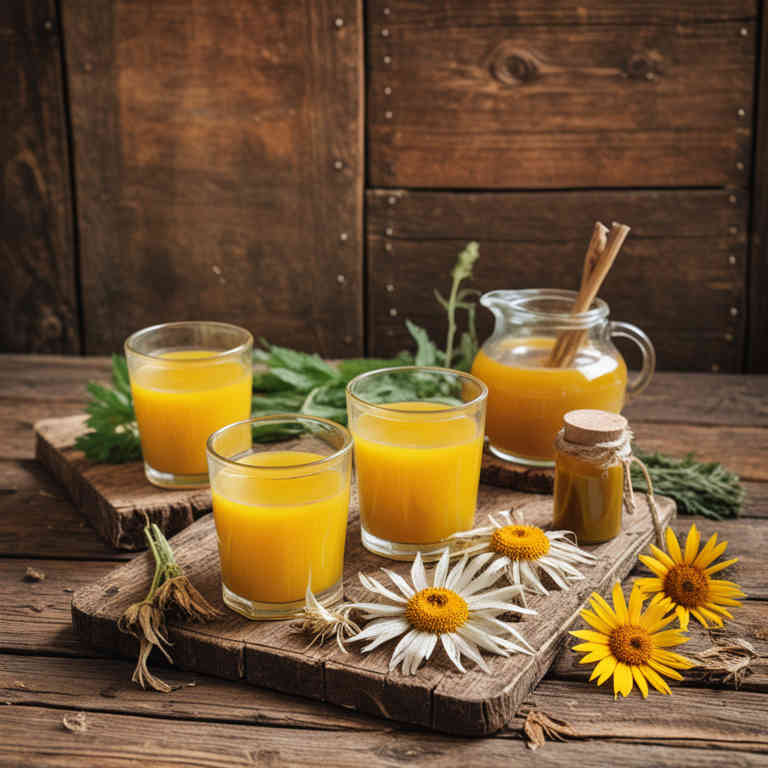Arnica montana juice for medicinal use

Arnica montana juice is a preparation derived from the fresh leaves and flowers of the Arnica montana plant, which is native to Europe and parts of North America.
It is commonly used in herbalism for its anti-inflammatory and analgesic properties. The juice is typically applied topically to treat bruises, sprains, and muscle pain due to its ability to reduce swelling and promote healing. It is often diluted with a carrier oil or alcohol to prevent skin irritation.
In traditional herbal medicine, it is valued for its ability to support the body's natural recovery processes after physical trauma or overexertion.
Uses
Arnica montana juice has been used to treat various inflammatory and painful conditions for centuries.
Historically, it was employed by the Swiss and other European herbalists to alleviate muscle aches, bruises, and joint pain. Traditional uses also included its application for reducing swelling and promoting healing in wounds. In modern times, it is commonly found in topical creams and gels for sports injuries and arthritis.
However, it should not be ingested as it can be toxic when taken internally.
Benefits
Arnica montana juice has health benefits such as reducing inflammation, alleviating pain, and promoting skin healing.
It is commonly used topically to treat bruises, sprains, and muscle soreness due to its anti-inflammatory properties. The juice contains compounds like helenalin and other sesquiterpene lactones that contribute to its therapeutic effects. It may also support the body's natural healing processes by improving circulation and reducing swelling.
However, it should not be ingested as it can be toxic when taken internally.
Constituents
Arnica montana juice active constituents include sesquiterpene lactones, flavonoids, and caffeic acid derivatives.
These compounds are known for their anti-inflammatory, analgesic, and antiseptic properties. The sesquiterpene lactones, such as helenalin, are primarily responsible for the plant's potent anti-inflammatory effects. Flavonoids contribute to its antioxidant activity, supporting overall cellular health.
Caffeic acid derivatives help in reducing pain and swelling, making arnica montana juice a popular remedy for muscle aches and minor injuries.
Preparation
To make Arnica montana juice, first gather fresh Arnica montana flowers, ensuring they are free from pesticides.
Next, gently crush the flowers to release their juices, using a mortar and pestle or a clean knife. Place the crushed flowers in a glass container and cover them with a high-quality vegetable glycerin or a mixture of alcohol and water, maintaining a ratio of 1 part plant material to 5 parts liquid. Let the mixture steep in a cool, dark place for 4 to 6 weeks, shaking occasionally to ensure even extraction.
After the steeping period, strain the liquid through a fine mesh or cheesecloth to obtain the final Arnica montana juice, which can be used topically for its anti-inflammatory properties.
Side Effects
Arnica montana juice may lead to skin irritation, redness, and allergic reactions when applied topically.
It is commonly used for its anti-inflammatory and pain-relieving properties, particularly for muscle aches and bruises. However, ingestion of Arnica montana juice can be toxic and may cause gastrointestinal upset, nausea, vomiting, and even more severe systemic effects. It is important to avoid using it on broken skin or open wounds to prevent absorption into the bloodstream.
Always consult a healthcare professional before using this preparation, especially if you have a history of allergies or are taking other medications.